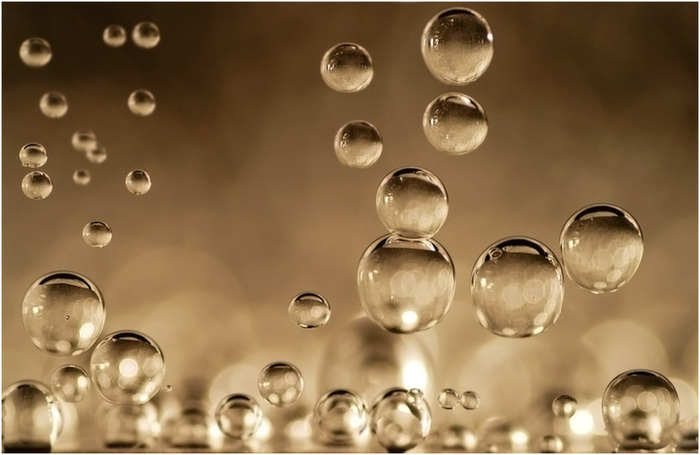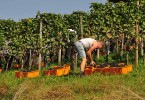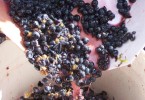The world of Spumante wines is such a wide world, almost like the number of bubbles in a flute.
The method makes the difference!
The main difference in the bubbles’ world is the method used to produce them, there are two methods: secondary fermentation in press tank and secondary fermentation in bottle, the so-called Traditional Method.
Don’t worry, it seems a foreign language but we are going to explain everything!
In both the fermentations, it is necessary to start from a wine, called base wine, that can be characterized by a single variety or a mix of different grapes.
The secondary fermentation in press tank is the main characteristic of the Charmat Method, also called Martinotti (from the name of the person that have the idea and who realized it); this quick making process allows to save the main characteristics of the grapes in order to obtain fresh wines ready to be drink. An example is Prosecco and Asti Spumante.
Let’s see how it works…
The base wine is filtered and stabilized before adding the selected yeasts for the secondary fermentation, the next phases (pouring, filtering and bottling) take place in isobaric conditions, with the same pressure level.
Traditional Method, the bottle fermentation…
From this method, rich in history and poetry, come the bubbles of the aristocratic Champagne, the great Franciacorta and Trento Doc.
In Italy, Camillo Gancia, Antonio Carpenè and Giulio Ferrari have been the forerunners of this techniques also called “Champenoise method”. Today, the most famous areas where these types of Spumante wines are produced are Lombardy (Franciacorta and Oltrepò Pavese) and Trentino Alto Adige, but we can find high quality bottles in other regions of Italy.
After the creation of the cuvee (mixing of the base wines using mainly Chardonnay, Pinot Nero and Pinot Bianco), it comes the moment of the addition of the “liqueur de tirage”.

It is a mistelle of wine, brown sugar and yeasts. When the wine and the mix will be perfectly blended it continues with the bottling. The bottle is closed with a crown cork and a small plastic cylinder called “bidule” that contains the yeasts.
The wine can stay on the yeasts from 18 months to many years, transforming the sugar into alcohol and carbon dioxide to “dead” in autolysis giving all the substances obtained in advances.
Until the moment the wine ended its ageing, the bottles are placed horizontal. Then they move to a vertical position through a process called remuage. During this process the dead yeasts (called “lees”) come till the “bidule”, under the cork.
Before corking and packaging the bottles up, the disgorging take place (or degorgement). The disgorging consists in removing the crown cork to remove the lees to avoid that they could ruin the wine. In the past, this phase was made “a la volee”, turning the bottle and corking it when the air reach the neck of the bottle; now it is possible to remove only the lees without loosing wine. It is amazing to see the corking method “a la volee”, but it is slow and dangerous, in fact if the cork is removed just few seconds before, the yeasts could be mixed, whereas if it is removed few seconds before, the wine can be lost. Fortunately, the technology invented the solution: a conveyor belt that soaks the neck of the bottles in the liquid nitrogen, which freeze only the bidule and its solid content. Once frozen, the bottle is uncorked and the frozen part is removed, without wasting wine.
An important phase is the dosage. Wine and brown sugar are secretly mixed and added to have the desired quantity of sugar, this will create different types of Spumante wines: Dry, Extra Dry, Brut, Pas Dosè.
After adding a small quantity of the same wine to reach the same relationship between wine and air under the cork, it’s time to close the cork and packaging the bottle.
At this point, after all this words, there is still a doubt: which is the difference in the glass?
Well, as the processes are different there will be different final results!
The easiest making process is the Martinotti Method, in the wines produced with this method it is possible to find the main characteristics of the grapes: high quality wines, elegant, fine, delicate, with fruity and fresh notes. Moreover it is characterized by clear colours and shades that show the youth of the wine.
The Traditional Method is longest and more complex (with higher costs) and the wine will have a higher structure. No more fruity perfumes but notes derived from refined yeasts, the bread crust notes will substitute the citruses perfumes and the colours will be darker and stronger with yellow-gold shades.
All these wines have a common characteristic: the bubbles, small and numerous, more or less lasting, which enhance the conviviality, making happier the moments with friends.
Our advice is to give the right importance to these wines, without shut them in the aperitif as “gregarious”. Make them the main characters of the meal!
The most important advice is: drink few, but drink excellent wines!!
Sommelier Matteo Bernardi for Enjoy Food & Wine







